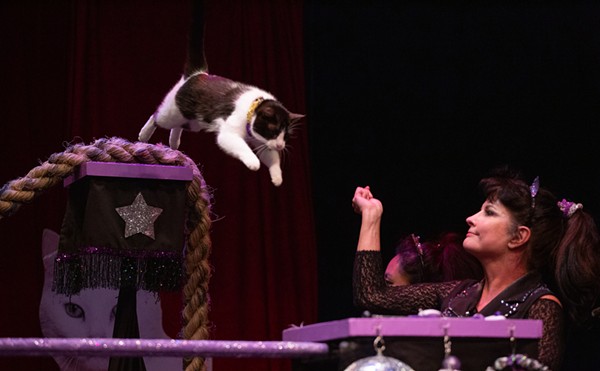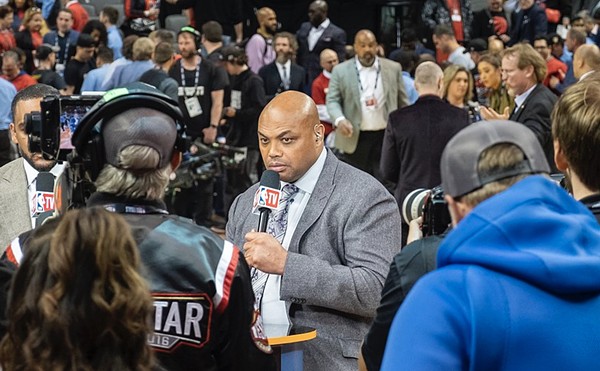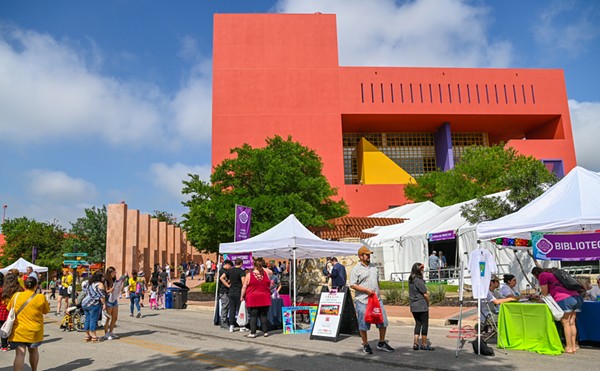As much as we like to look at the urban environment from the viewpoint of a pedestrian in this column, the roadways of the city cannot be denied. They are as much a part of the urban experience, and for many people driving them is the most familiar outdoor activity.
In a short amount of time on a freeway one is apt to encounter lots of complexities and contradictions. The road is a means to an end surely, but it can also provide reward and stimulation for observant drivers.
One of my favorite drives is the McAllister Freeway in San Antonio, the 7.5 miles of US 281 between Loop 410 and the downtown area. As the primary link between the airport and downtown it has special status. Compared to other highways, it is the smartest-looking one. For first-time visitors it can make a very good first impression.
Driving south from Loop 410 the first portion of McAllister is fairly uneventful. As we approach the Quarry Market the sense of a parkway begins. For the next 2.6 miles, a broad swath of deciduous trees frames the elevated roadway. That continuous stretch of green reminds us of the compromise that followed the first proposed routes through Olmos and Brackenridge Parks.
Our scenic experience shifts noticeably at the Hildebrand Street overpass. At Mile 4.4 a sense of compression and a change in direction signal that we’ve entered a new zone. We get our first real glimpse of the downtown skyline.
Just west of the freeway there’s a building worth noting. Actually it’s the east façade of the Alamo Convocation Center, a gymnasium on axis with adjacent Alamo Stadium. The Center’s east elevation is the building’s signature, a large-scale checkerboard composed of metal panels. The grid consists of alternating tan and white squares stacked in five horizontal rows. Over this pattern are six stocky air-conditioning ducts, vertical elements not unlike the exposed mechanical system of the Centre Pompidou.
Though modest in materials and detailing, the Center’s east face is a wonderful exception. It differs markedly from other sides of the structure, and initially one might think this discontinuity is random or gratuitous. But it is a reasonable response to the peculiar conditions of this site, where unconnected streetscape and freeway create distinct viewing angles.
The older part of the building recognizes Alamo Stadium and the access from Hildebrand and Stadium Drive. From this approach the newer checkerboard side is practically invisible. But for motorists driving on US 281 this elevation is the building itself. The super-graphic design meets the freeway with appropriate scale and playful simplicity.
This project dates from 1989. Designed by Marmon and Mok Architects, it was part of additions and improvements to various facilities in the San Antonio ISD. The evidence suggests that the design is a nod to Robert Venturi’s investigations of building-as-signboard. A specific inspiration might well have been Venturi’s proposal for the National Football Hall of Fame at Rutgers University. Though unbuilt, it set an important architectural precedent.
Further south on US 281 we get into an area where the operative word is “billboard.” Real billboards. In general, I am not against outdoor signs. Some are better designed than others. It would be wonderful if they all were pop-culture landmarks showcasing graphic excellence. But reality is something else. Maybe only companies with award-winning design standards know good billboard design.
If you survey the 35 to 40 billboards on the McAllister Freeway, you won’t find many award-winners. Overall the graphics could not get someone into an accredited design school. A few are visually interesting, but most are predictable and forgettable, like clip-out coupons in a newspaper supplement.
Today there are more than 450,000 traditional billboards (panels or stretched vinyl) in the U.S. In the future we face the prospect of many more that are animated. New digital signs use the same computer technology as the JumboTrons in arenas and stadiums, with familiar LED video displays that can change instantly. Already small ones are showing up around town.
That future isn’t here in a big way yet, and it might be helpful to look back to a simpler time for inspiration and counsel. Kids, ask your mom and dad to tell you about Lady Bird Johnson, the best First Lady to come from Texas (November 1963 to January 1969). No other person did more to protect the natural beauty of this state, and without her efforts the Highway Beautification Act of 1965 would not have been possible. Yep, without Lady Bird things would really be a whole lot worse.
So, who decides what the future will look like? Will it be someone trying to sell you something? It’s time to think about where we are going. What will we see on the way?
















